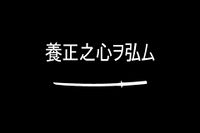Daihon Kaigi
Daihon Kaigi | |
|---|---|
 | |
| Chairman | Yohei Kobayashi |
| General Secretary | Ryosuke Sakai |
| Honorary Chairman | Yusuke Koyari |
| Adviser | Iwao Kitamura Yasushi Fujii Saigo Morita |
| Founder | Keizo Takagi |
| Founded | 21 March 1960 |
| Headquarters | Nakazara, Dayashina |
| Membership (2022) | 41,000 |
| Ideology | |
| Political position | Far-right |
| Colours | Black & White |
| Website | |
| daihonkaigi.da | |
The Daihon Kaigi (Dayashina Conference) is an ultra-conservative, far-right political organisation and lobby group based in Nakazara, Dayashina. The group was established in its first form in 1960 by Keizo Takagi, business magnate and eldest son of IDA General Shigeharu Takagi. Daihon Kaigi has 41,000 members as of 2022, well below its peak membership of 79,000 in 1978.
The organisation's stated aim since its founding is to "strengthen the pillars which uphold Dayashinese society by upholding its core values, preserving its traditions, and promoting responsible collective dedication to the objective advancement of the nation." The group is historically militantly anti-communist (as well as anti-syndicalist and anti-socialist), tracing its origins back to Dayashina's Red Scare during its Cold War with Menghe. It is ultranationalist, promoting patriotic education, religiosity (in the form of State Shinto), and universal national service. Lastly, the group is considered state capitalist, with emphasis on the government's financial role in uplifting/protecting Dayashinese business globally and the constant strengthening of Dayashina's public welfare/social programmes through increased public funding and private sector collaboration.
The group, comprising of a diverse membership from grassroots activists to the nation's most noteworthy business magnates, heavily influences Dayashinese government both directly and through affiliated groups. Current Prime Minister Daichi Noru is a member of Daihon Kaigi, and since his first election in 2010, the majority of his cabinet members have also been members of or affiliated with Daihon Kaigi. Additionally, one-third of the members of the National Branding Council are members of Daihon Kaigi. The group was a major factor in pushing for the creation of the Dayashinese Association. It is considered Dayashina's most influential non-governmental organisation.
The group has a controversial history, most notably due to its involvement in the creation and financing of East Hemithean anti-communist paramilitaries, namely Kazuo Kikuchi and Kim Ji-tae's Wakasa Division (now Inazuma Group) and it's extensive connections with other far-right hardliner paramilitary organisations such as Acción Gótica. Members and affiliates of these paramilitary groups are known for identifying one another with unique tattoos, some overtly with small neck tattoos. Daihon Kaigi has also been highly influential in producing Dayashinese military interventions in foreign countries, namely against the communist Husseinarti to liberate Sohar and Salalah and the 2019 Invasion of Vyzhva, another communist power. At the peak of Menghe's nuclear threat on Dayashina, and before the Septentrion Treaty on Atomic and Nuclear Disarmament, Daihon Kaigi most controversially lobbied the government to unrestrict Dayashina's self-imposed ban on the production and use of nucler armaments in order for direct retaliation against Menghe. Daihon Kaigi is considered by many to be the heart of modern Dayashinese imperialism and a major reason why Dayashina is slowly trending towards an increasingly authoritarian interpretation of democracy. It is further criticised for its extensive connections to Dayashina's largest corporations and being a partial vehicle for Dayashinese corporate interests at home and abroad. General Yutaka Ueda believed that Daihon Kaigi was a well-intended and necessary part of Dayashina's political consciousness, but that its leadership need to be kept under a constant and stern eye by the public to ensure it remained a grounded movement driven by and for the interest of the common man and woman.
Subsequently, Daihon Kaigi underwent gradual structural reforms in the 1970s and 1980s which eventually made its intentions, activities, and ventures easily and readily available to members of the public. Furthermore, it shed its connections to anti-communist paramilitaries and mercenary groups following detente with Menghe, and was a driving force in reforming the business model of the Wakasa Division into Inazuma Group, which is now Dayashina's largest state-affiliated private military contractor.